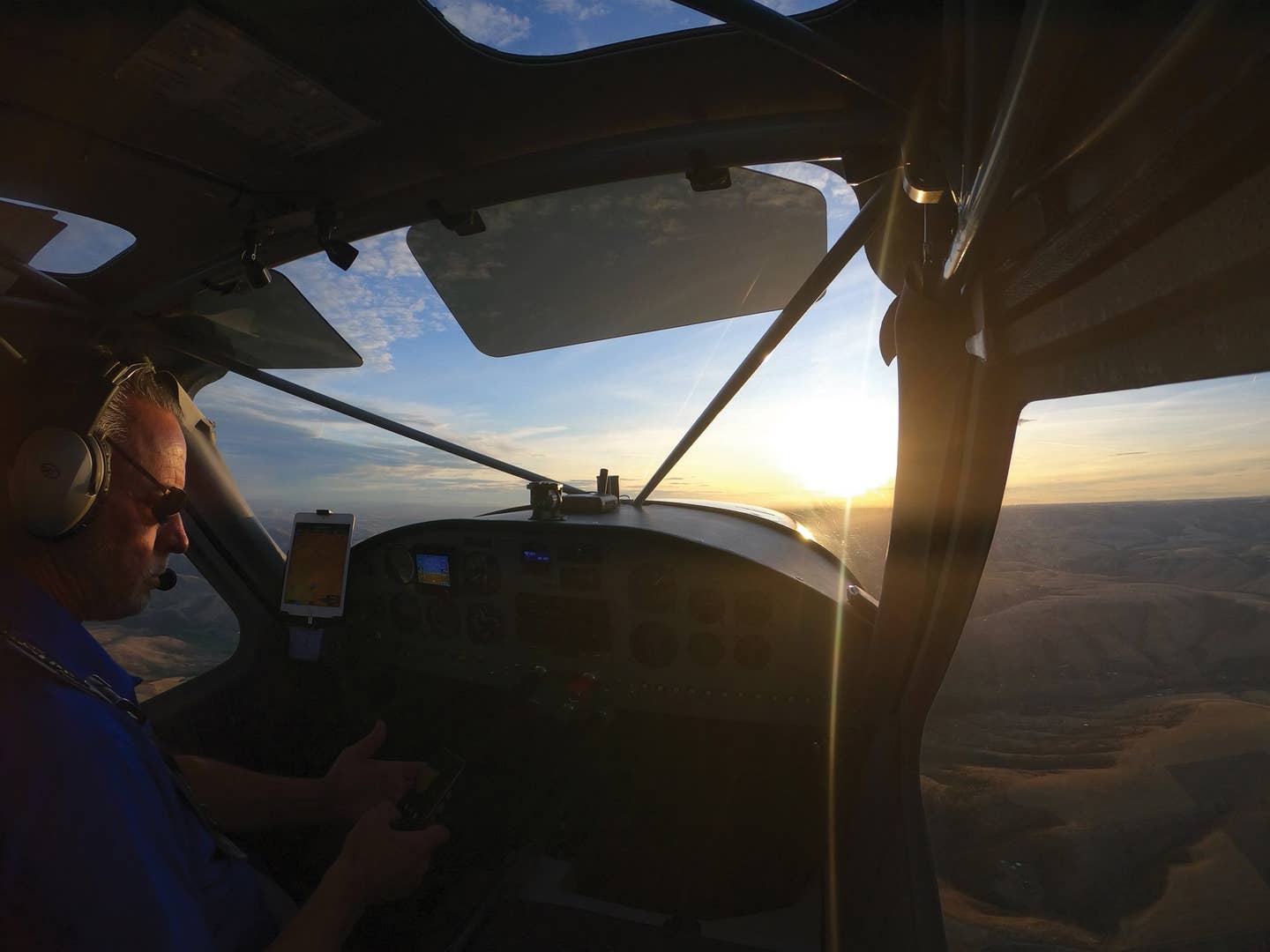Phone a Friend?
Sometimes, calling an instructor isn’t the best use of resources in an emergency.

The pilot took his first lesson one month before the accident.
Flying several times a week, he’d accumulated 44 hours of experience, about seven of those solo. On May 25, 2021, he planned a multistop, solo cross-country around the Tennessee countryside. The goal was to fly from Knoxville Downtown Island Home (KDKX) to Crossville Memorial (KCSV), Cleveland Regional Jetport (KRZR), and back home to Knoxville—a nice 169 nm triangle.
The pilot was 35 years old, described by his instructor as “a quick learner with flying ability and communication; he was a successful businessman, a good family man, and as a pilot, he learned more quickly than the average Joe.” Early that morning, they met at the Island Home airport, where the instructor reviewed the pilot’s cross-country preparations.
The plane was a 1979 Grumman American AA-5A Cheetah, a smart-looking, low-wing piston single with four seats under a sliding canopy. They were never as popular as Pipers or Cessnas, but over 3,000 AA-5s were made before production stopped in 2005.
It was a familiar plane to the pilot, who had all his time in the type. It was also well-known to his flight instructor, who had logged almost all of his 490 total hours in AA-5s. The aircraft had no known issues. The National Transportation Safety Board (NTSB) determined control continuity existed on all flight control surfaces, and examination of the engine revealed “no preimpact anomalies.”
The weather seemed benign. Completely clear skies and calm winds were being reported. Visibility was recorded at 9 miles. The temperature was 72 degrees Fahrenheit, with a dew point of 63 F. A little muggy perhaps, a little hazy maybe, but still a great morning for a student cross-country.
By 7:15 a.m. the first leg was completed. ADS-B data shows the plane then leaving Crossville, tracking south, and climbing to 3,700 feet, straight toward the next airport. Shortly after that, the Cheetah starts a gentle descent.
At 7:23 a.m., now at 3,000 feet, it makes a descending right 270-degree turn, rolling out heading east, still descending. There were no radio calls to ATC, Flight Service, or local airports, but at 7:26 a.m. the flight instructor’s cell phone rang.
He remembers the phone conversation this way: “Hey…How are you doing buddy?”
Pilot: “Hey…It feels like the engine is not getting power. It’s only getting 1,700-1,800 rpm and I am going 75 knots.”
The instructor told the NTSB the student sounded “calm, cool, and collected.” The instructor said he told the pilot to check the fuel tanks, make sure both magnetos are on, and look at the carb heat. The pilot said he checked all that. The engine instruments were in the green, but he could not climb as it was not making full power.
Instructor: “Where are you at? What is the closest airport to you? You need to look for the closest airport and land.”
Pilot: “I think I am 40-50 miles away from Crossville. I don’t think I can make it back to Downtown Island from where I’m at.”
Instructor: “You need to land at the closest airport immediately. I can come pick you up.”
Pilot: “I am only going 70 knots now. It’s not getting power.”
Instructor: “You need to make an emergency landing. Is there an open field to land on?”
Pilot: “I can’t clear these mountains. I’m coming up on trees.”
Instructor: “You’re OK, buddy. Is there an open area nearby? Are you talking to air traffic control right now?”
Pilot: “No, I am not. This plane is going down.”
The instructor said he heard screaming, the sound of impact into trees, then the phone line disconnected. He called 911 to report a crash.
Multiple fire departments and rescue squads were mobilized along with the Tennessee Bureau of Investigation and Highway Patrol. They used fixed- and rotary-wing aircraft along with ground assets. At 3:30 in the afternoon, the plane was finally found in thick underbrush and woods. The pilot had died in the burned wreckage.
After the accident, the NTSB determined the probable cause to be “partial loss of engine power due to carburetor icing, which resulted in a descent and impact with terrain.” It’s hard to think about ice when it’s sunny and 70 degrees outside, but the temperature dip associated with the pressure drop inside the venturi of a carburetor is considerable.
In fact, the temperature and dew point were ideal for forming carburetor ice. The FAA’s CE-09-35 Carburetor Icing Prevention Bulletin has a graph outlining the probability of icing for various conditions. A temperature of 72 with a dew point of 63 is well inside the “icing, glide, and cruise power” area and also inside the “serious icing, glide power” area.
The warning sign is a drop in rpm with some engine roughness. Immediately applying full carburetor heat—and keeping it on—may make the engine run rough initially while the ice melts but will result in almost full power being restored.
Carb ice is insidious, quietly sneaking into our engine, slowly restricting fuel/air flow.
Then, with correct application of carb heat, it takes its nail-biting time to leave, eventually melting away.
Calling his instructor on the phone wasn’t the worst idea, but there are more important first actions. The AA-5A POH has a checklist for engine failure during flight. In order, it details “fly best glide speed, place carburetor heat on, switch fuel tanks, mixture rich, master switch on, auxiliary fuel pump on, throttle open, ignition switch both, primer in and locked, press starter (if propeller is stopped).” Even for an instructor, that’s a lot to remember when unexpectedly getting a phone call out of blue. Always fly the plane first, then carefully consult the emergency checklist.
In its recently released final report, the NTSB determined that “contributing to the accident was the pilot’s failure to apply carburetor heat following the initial loss of engine power.” That’s the second item on the emergency checklist.
Another resource we have is calling ATC. It can give us radar vectors to the closest suitable airport, provide the latest weather conditions, handle priority requests, and provide ground assistance.
In an emergency, if you don’t know the local ATC tower or radar frequency, you can always use frequency 121.5. “Guard” is monitored by almost everybody, including airliners flying overhead, that can pass messages to and from ATC.
When something bad suddenly happens, we all want to hear the calm, knowledgeable voice of an instructor. But trying to hand-fly at low altitude while talking on a cell phone is a bad idea. We have better resources: checklists, instrumentation, Flight Service, and ATC.
The pilot told his flight instructor the Cheetah was 40-50 miles away from Crossville. If he had contacted ATC, it would have seen exactly
where the plane was. Then the controller could have given vectors direct to the Crossville airport—behind him by only 7 miles.
Image: Adobe Stock

Subscribe to Our Newsletter
Get the latest Plane & Pilot Magazine stories delivered directly to your inbox






